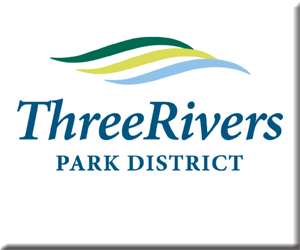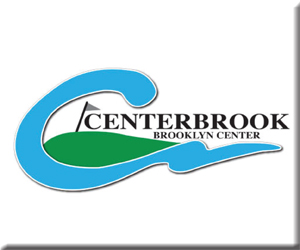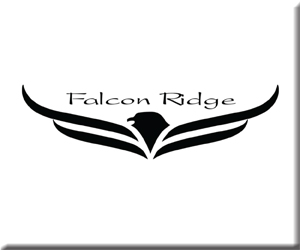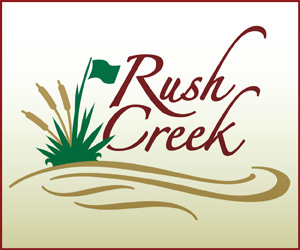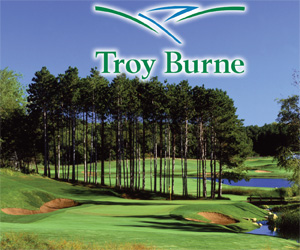Edinburgh USA, Back To Top Form
By R.J. Smiley
The golf course that once held the USGA Public Links Championship and a Women’s professional tournament for seven years are now BACK IN TOURNAMENT CONDITION.
Golf courses get old and tired – just like the golfers who play them! The truth is, all golf courses go through life’s various stages; just like people. The first stage in the life of a golf course is the ‘conception’ stage. Conception occurs when a need for a golf course is recognized and then proven by a feasibility study. Sometimes conception is only the unproven desire or the dream of a rich guy. Trouble. The developer then hires a designer, arranges for financing and oversees construction of his baby. The second stage, call it the ‘grow-up’ stage, like a teenager, is where the course goes through its growing pains, fixing design flaws and then finding its place among its various competitors. Stage three, the ‘mature business’ stage, occurs when the golf course is a functioning business with proven management and experienced staff with a following of regular customers. This ‘mature business’ stage can last anywhere between 25 and 50 years before changes need to be made as the golf course approaches the ‘old age’ stage. In ‘old age’ stage major changes must be made. Budget restrictions cause many golf operations to make a series of unplanned and unrelated changes piece by piece. Like waiting for the roof to leak before replacing it. Well financed operations like Keller, backed by the county, and most private clubs, that can access its members, simply close for a season and completely rebuild. The difference between a golf course and a person, a golf course can continue to remake itself on a regular basis – indefinitely.
Over the next several years Twin Cities public course golfers will be treated to a variety of “drastically” updated, refurbished and, yes, some totally rebuilt municipal golf courses. In 2014 we were treated to the “premature opening” of a totally refurbished Keller Golf Course, Minnesota’s most famous muni track. Designer, Richard Mandell (we will learn more about his plans in later issues of Tee Times), did a masterful job of moving the course into the digital age while retaining the old “Keller” feel. In the 2015 season we will experience the real Keller as the grasses have matured and all the construction scars have completely healed.
In this article we will look into the mirror and catch the reflection of the “REAL” Edinburgh USA, the first really “upscale” municipal facility in the Twin Cities area. In 1983 the city fathers of Brooklyn Park did it right, they made a commitment to have the best public golf course operation in Minnesota in their little suburban community. And they did just that. They retained Robert Trent Jones II, a big name in golf course architecture business, to design a truly championship layout; and added a clubhouse to match! Since 1987 the thousands of dollars added annually to the city’s property tax rolls have proven to be a silent benefit to Brooklyn Park.
As a fledgling golf course developer, assisting Lyle Johansen with the development of Pheasant Acres Golf Course, I recall visiting the former potato field that was being transformed into Edinburgh USA. The vision of mountains of topdressing, that resembled the Alps, still sticks in my mind. That perfect grass growing mixture was used for final grading of the fairways. Edinburgh was spending more money on fairway topdressing than we were spending on our entire golf course.
The innovation and design at Edinburgh resembled something directly out of a Star Wars episode. Edinburgh would be the first municipal golf course in Minnesota with bent grass fairways. The greens were huge, even larger than its neighbor Bunker Hills. The word spread among golfers that Edinburgh had elephants buried in some of their greens. The skinny island fairway of the seventeenth puts a punctuation mark on the 12 acres of man-made water on the course. A golfer who is used to playing the tree lined courses up north remarked, “That 17th fairway looks like a 30 yard wide state of Florida with the Gulf on one side and the Atlantic on the other. Even if you hit that fairway, you still have to approach that peninsula green that looks like a rowboat in the ocean. Truly, the 17th hole is a signature hole to remember.”
Edinburgh boasts a 40,000 sq. ft. triple green, the only one that I know of. The green, which is a combination of the putting green, 9th and 18th green, sits directly in front of the mammoth clubhouse.
The original development plan called for something truly unique, a private, members only club, within the walls of the clubhouse. Since it’s opening The St. Andrews Club has given its members a country club membership experience at a municipal golf course.
All the things that made Edinburgh USA something special are still there today. However, in 2013, twenty-five years after Edinburg had opened to rave reviews, the course had fallen on hard financial times. The mature golf operation stage had peaked several years earlier and Edinburgh was suffering from too many golf courses and too few golfers. Across America golf was in a long slow downward cycle losing players annually while the economy was still attempting to recover. Golf revenues that once helped Brooklyn Park pay for a second ice arena were no longer covering the expenses of operation. Changes had to take place!
Rather than stick their heads in the sand and quit, city fathers did the right thing. Again! They brought Robert Trent Jones II, the original designer, back to his creation to analyze the condition of the golf course. Time, along with annual maintenance budget cutbacks had taken their toll on this once perfect course. They asked Jones for recommendations and an estimated budget to return the course to pristine condition. The city fathers went one step further; they hired Golf Convergence a Denver based consulting firm to analyze the entire golf course and clubhouse operation. After a thorough review of all Twin Cities public golf operators, the consultants determined that newer very upscale public golf operations, like Rush Creek, The Legends Club, StoneRidge and Troy Burne, had retained their market share while average and below average public course continued to lose money…. and players.
The consulting firm confirmed Jones’ recommendations while Brooklyn Park’s financial people did some financial gymnastics and found $2.5 million (in some unknown fund) to complete the upgrade. All the sand bunkers on the course were completely rebuilt. Some were reshaped and others removed. Irrigation was improved on all greens and three of the original greens were totally rebuilt. Five new tees were added and mowing patterns were changed and believe it or not over 30 trees* were removed.
As We anxiously await the sunrise of the 2015 golf season, Edinburgh USA, with the refurbishing complete along with a larger maintenance budget, should be placed high on the must play list.
By the way, the consultants report also included improvements to Girvan Grille and the parking lot. So take it from a golf writer who has sampled much of the fare of this off-the-beaten-track dining spot, schedule a tee time later in the day and stay for dinner.
*Tree removal will be discussed in my continuing story of municipal golf renovation. Trees that once were saplings in the early days have grown into a maintenance nightmare and an obstacle that slowed down play.
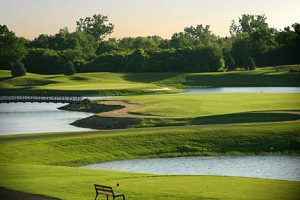
Edinburgh #17 Photo Courtesy of Tony Hellman Photography




